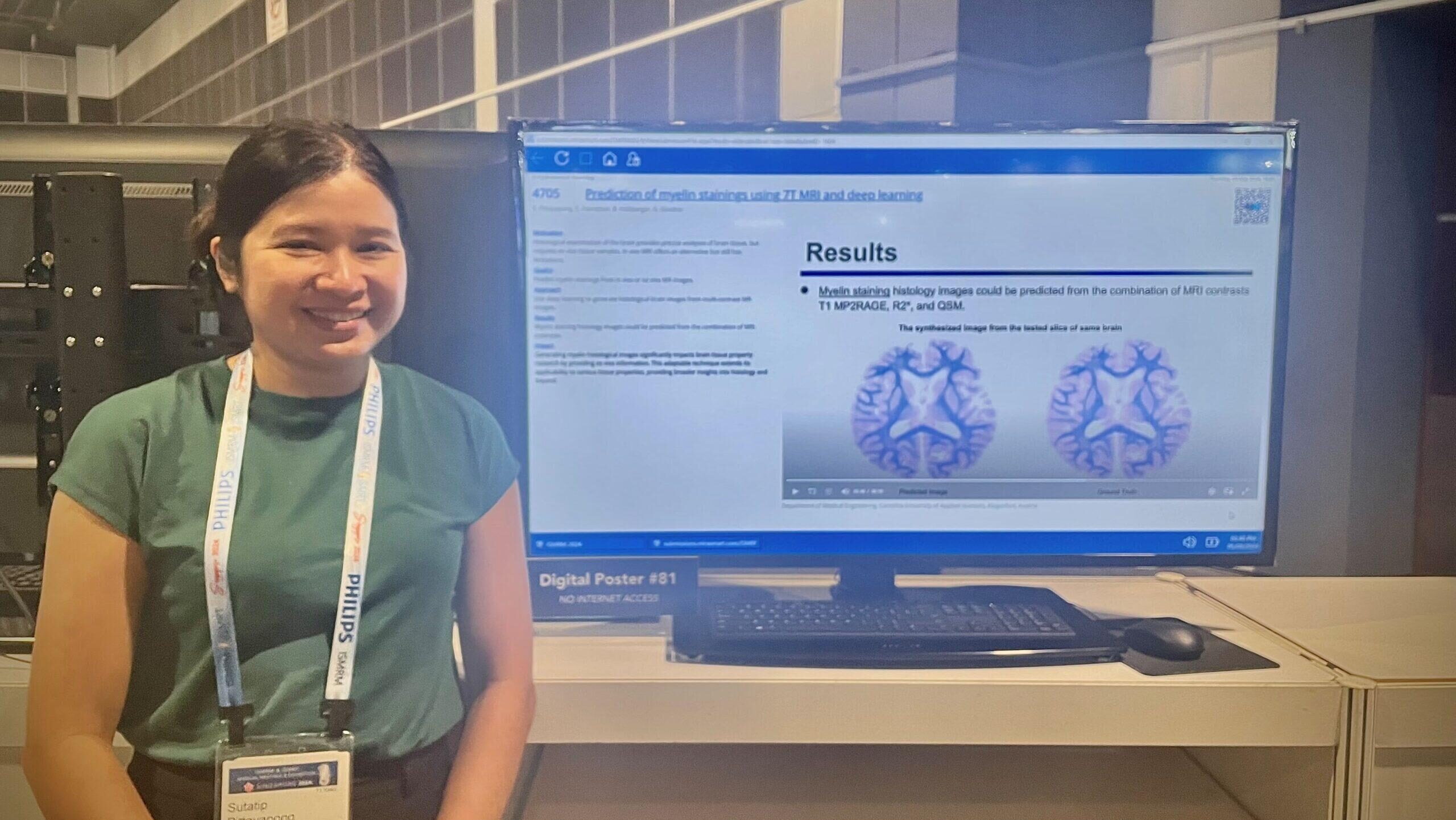Magnetic Resonance Imaging (MRI) is a non-invasive imaging method, which provides very good soft-tissue contrast. Since its development more than 50 years ago, MRI underwent extensive development and has proven itself to be a versatile imaging technique. Besides structural imaging, which also can be done with a number of different contrasts, MRI is often used to monitor brain activation, define the chemical composition of tissue, perform angiography, asses the perfusion of the tissue by blood or the diffusion of water throughout the tissue which reflect the tissue microstructure. Two of the newer and therefore less common MR techniques, Quantitative Susceptibility Mapping (QSM) and Susceptibility-Weighted Imaging (SWI), provide images with contrast defined by magnetic tissue properties of the tissue (so-called “magnetic susceptibility”) and thus allow delineation of calcifications, haemorrhages, of areas with increased iron accumulation.

QMR Lucca, which happened this October in Italy, was the biggest workshop in this field and included a half-day Educational Program followed by 2.5 days of Scientific Workshop featuring plenary, power-pitch and poster sessions. “Free time” for interaction and round-table discussions represented another important part of the workshop. Researchers and clinicians interested in this field came from all over the world to Lucca to join this conference, which took place in a beautiful location – the Church of San Francesco. I, Beata Bachrata – a Lab Engineer for Medical Technologies, had the pleasure to be there, to meet many new people but also old friends, and to present my work on Ultra-Fast High-Resolution QSM Using Super-resolution principles.

It was not easy to present the work in the 2 min “power-pitch” slot I got, but it worked great as a teaser for the subsequent poster session, in which there was enough time to discuss the details of my work with interested people. Talking to researches, I got several ideas on how to proceed with this work before its publication. Luckily, it was also announced at the conference, that the deadline for a Neuroimage special issue on QSM will be postponed, giving people like me enough time for implementing the new ideas they have just gathered. Many new collaborations were also agreed on and I am very happy that one of them will be also built upon my PhD project on fat-water separation in MRI.

Yours,
MedTech @ FH Kärnten Team



